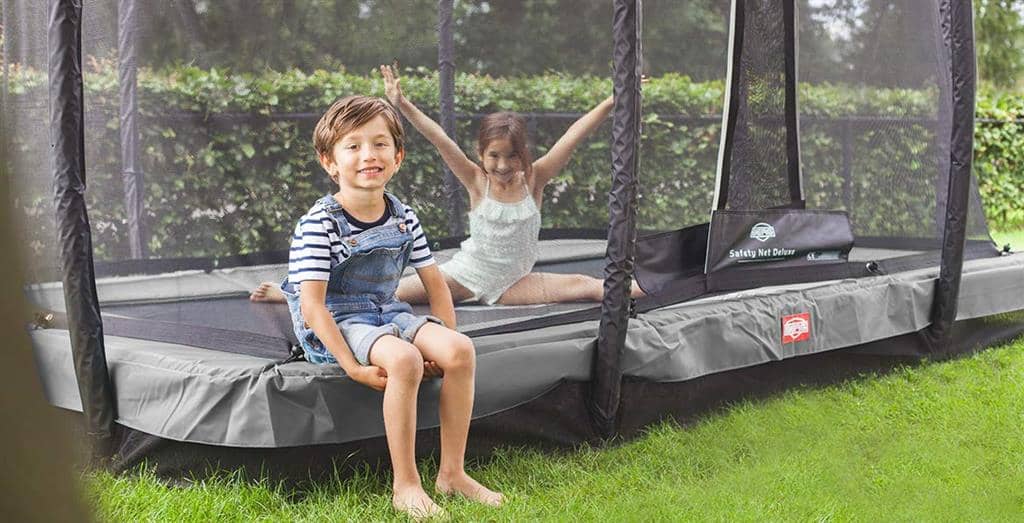Guide to Digging the Perfect Hole for Inground Trampolines
Installing an inground trampoline requires precise planning, and one of the most crucial aspects is digging the hole to the correct size. The hole needs to be deep and wide enough to accommodate the trampoline frame while allowing for proper airflow and bounce performance.
This guide provides details on the recommended hole sizes for the most popular inground trampoline sizes, along with a summary table for easy reference.
1. Importance of Proper Hole Dimensions
Before digging, it is essential to understand why the hole dimensions matter:
- Safety: A properly sized hole ensures that the trampoline sits securely and evenly.
- Performance: Adequate depth and airflow prevent poor bounce quality.
- Longevity: Proper drainage and placement reduce structural wear over time.
2. Factors That Influence Hole Dimensions
Several factors determine the exact hole dimensions for an inground trampoline:
- Trampoline Size: Larger trampolines require deeper and wider holes.
- Trampoline Type: Some models need additional space for airflow systems.
- Soil Type: Soft or loose soil may require reinforcement to prevent collapsing.
- Drainage Considerations: Additional depth may be necessary for gravel layers to manage water buildup.
3. Recommended Hole Sizes for Popular Inground Trampolines
The table below outlines the recommended hole dimensions for different trampoline sizes. The depth typically follows a bowl-shaped design, with the deepest point in the center and a gradual slope toward the edges.
| Trampoline Size | Hole Diameter (m) | Hole Depth at Edge (cm) | Hole Depth at Center (cm) |
|---|---|---|---|
| 8ft (2.4m) | 2.2 – 2.4 | 40 – 45 | 75 – 80 |
| 10ft (3.0m) | 2.8 – 3.0 | 40 – 45 | 80 – 85 |
| 12ft (3.6m) | 3.4 – 3.6 | 45 – 50 | 85 – 90 |
| 14ft (4.3m) | 4.1 – 4.3 | 45 – 50 | 90 – 100 |
| 15ft (4.6m) | 4.4 – 4.6 | 50 – 55 | 95 – 105 |
4. Digging Process
Step 1: Mark the Area
- Use marking spray or stakes to outline the trampoline’s hole diameter.
- Ensure the area is level and free from underground obstructions like pipes or tree roots.
Step 2: Start Excavation
- Begin by digging out the perimeter of the hole to the required edge depth.
- Gradually shape the hole into a bowl formation, sloping downward towards the deepest center point.
- Use a mini digger for efficiency if working with a larger trampoline size.
Step 3: Level and Compact the Base
- Ensure the base of the hole is level to prevent an uneven trampoline frame.
- Compact the soil using a plate compactor or hand tamper to create a firm foundation.
Step 4: Add Drainage (If Needed)
- If your area has poor drainage, add a layer of gravel (10 – 15 cm) to the bottom of the hole.
- Consider installing a perforated drainage pipe to divert excess water away from the trampoline area.
Step 5: Install the Trampoline Frame
- Lower the trampoline frame into the hole and ensure it fits securely and evenly.
- Adjust soil depth if necessary to ensure the trampoline sits flush with the ground level.
5. Common Mistakes to Avoid
Mistake 1: Digging Too Deep or Too Shallow
- If the hole is too deep, the trampoline frame will sit too low, affecting airflow and bounce quality.
- If the hole is too shallow, the trampoline may protrude above ground, increasing tripping hazards.
Mistake 2: Ignoring Drainage Needs
- Without proper drainage, water can accumulate in the hole, leading to rust and structural damage.
Mistake 3: Uneven Ground
- If the hole is not level, the trampoline may wobble or cause uneven jumping performance.
Mistake 4: Forgetting Airflow Considerations
- Trampolines need adequate air circulation beneath the mat to maintain bounce quality. Some models require additional venting solutions.
6. Final Checks and Maintenance Tips
Final Checks Before Use
- Ensure the trampoline frame sits securely without movement.
- Check that the jump mat is properly tensioned and allows for optimal bounce.
- Test the drainage system by pouring water into the hole and monitoring runoff efficiency.
Long-Term Maintenance Tips
- Regularly check for soil erosion around the edges and refill as needed.
- Inspect the trampoline mat and springs periodically for wear and tear.
- Keep the area clean from debris, leaves, and dirt buildup.
- If water pools under the trampoline after heavy rain, consider adding more drainage gravel.
7. Conclusion
Digging the correct hole for your inground trampoline is a vital step in ensuring safety, durability, and optimal bounce performance. Following the recommended hole dimensions and proper excavation techniques will prevent common issues such as poor bounce, water accumulation, or frame instability.
By using this guide and referencing the summary table, you can confidently prepare your trampoline installation site and enjoy years of safe and fun bouncing!
